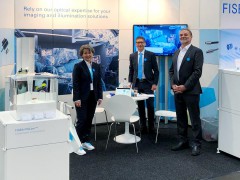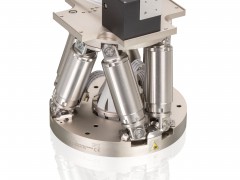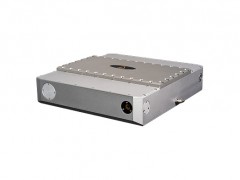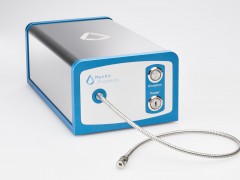IMAGE: The ultrathin SPIDER instrument aims to reduce the bulk of traditional space telescope optics by 90%. These first images are a step towards successful deployment. (Image credit: Lockheed Martin)
Lockheed Martin (Bethesda, MD; NYSE: LMT) revealed the first images from an experimental, ultrathin optical instrument, showing it could be possible to shrink space telescopes to a sliver of the size of today's systems while maintaining equivalent resolution. Weighing 90% less than a typical telescope, the Segmented Planar Imaging Detector for Electro-Optical Reconnaissance (SPIDER) opens a path for extremely lightweight optical instruments, allowing for more hosted payloads or smaller spacecraft.
More broadly, the SPIDER sensor technology has applications for aircraft and other vehicles--anywhere that depends onsmall optical sensors. The future could see UAVs with imagers laid flat underneath their wings, and cars could have imaging sensors that are flush against their grills.
The SPIDER project has roots in research funded by the Defense Advanced Research Projects Agency (DARPA). Lockheed Martin independently completed this phase of research at its Advanced Technology Center (ATC).
"This is generation-after-next capability we're building from the ground up," said Scott Fouse, ATC vice president. "Our goal is to replicate the same performance of a space telescope in an instrument that is about an inch thick. That's never been done before. We're on our way to make space imaging a low-cost capability so our customers can see more, explore more and learn more."
The system uses tiny lenses to feed optical data divided and recombined in a photonic integrated circuit (PIC), which was originally designed for telecommunications at the University of California, Davis. Using these chips in a different way, Lockheed Martin researchers unlocked new potential for ultrathin telescopes using a technique called interferometric imaging.
The tests involved a PIC aligned to a series of 30 lenses, each smaller than a millimeter across. An optical system simulated the distance from space to the ground, where scenes were illuminated and rotated. The first image included a standard bar test pattern, and the second image showed the overhead view of a complex rail yard.
The lenses and PIC comprise one section of a full instrument to be assembled in the next project phase. The team plans to increase the resolution and field of view in future phases.







